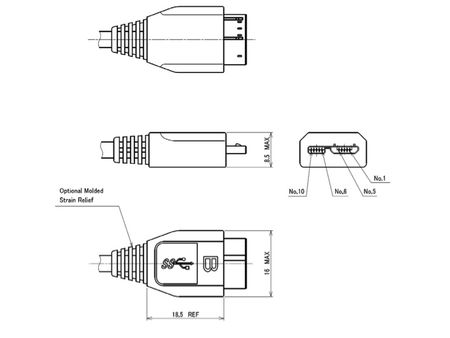SuperSpeed USB More Like HalfSpeed
This week marks a major milestone for the universal serial bus (USB) standard, which has just received its official 3.0 stamp of approval (PDF warning). The new standard is expected to be available in early 2010, and bring along a substantial speed boost.
According to official specifications, USB 3.0 will officially be known as SuperSpeed USB and carry with it a whopping bandwidth of 5 Gbps, which is roughly 1 CD’s worth of data (650 MB) per second. At this point, no hard drive that’s solid or otherwise can write or read at this rate, but it will certainly leave room for expansion. Some reports have indicated that SuperSpeed USB will operate at 4.8 Gbps, but the official specification calls for 5.0 Gbps.
The drawback with the USB standard is that it’s a host-based technology. This means that data transfer relies heavily on the host CPU to do all the processing. This is why we don’t see USB 2.0 (480 Mbps) exceed more than 50-percent of its total bandwidth — FireWire on the other hand comes a lot closer to its maximum bandwidth capacity. Because SuperSpeed USB is based on the same standards as USB 2.0, we can expect to see the same bandwidth drawbacks.
The new SuperSpeed USB will also be backwards compatible with older USB hardware, but you will still be required to use fully compliant SuperSpeed USB devices to achieve the highest throughput. Connectors will also be completely different, with the new SuperSpeed USB connector having more pin-outs and a different form factor — although we can expect new devices to contain both the old and new form factor.
Get Tom's Hardware's best news and in-depth reviews, straight to your inbox.
-
tipoo so using a fast USB 3.0 device will cause most single core computers to lag like hell?Reply
ah, well. the added bandwidth sure sounds great! but if USB 2.0 is only running at half its bandwidth capacity most of the time, what makes this any different? -
joex444 I use eSATA.Reply
Few devices will make any meaningful use of USB3.0 when it comes out, but by the time we're ready for USB4.0 we will find USB2.0 to be pathetic. So I guess it makes sense to move towards USB3.0 at this time, but for external HDs we should expand eSATA. It is the simplest way to do things, even the best constructed USB3.0 -> SATA interface will rob some bandwidth from the HD that a direct eSATA connection would offer. -
neiroatopelcc tipooso using a fast USB 3.0 device will cause most single core computers to lag like hell?ah, well. the added bandwidth sure sounds great! but if USB 2.0 is only running at half its bandwidth capacity most of the time, what makes this any different?Reply
usb2 is already beyond its limits so usb3 is a welcome improvement. Let's just hope everybody has quadcores or better when it's released though. Or perhaps an onboard c7 processor or something to handle usb?
In any event - attach a harddrive or 2 webcams to an usb2 hub and you're out of bandwidth - so it's not exactly early to release a new standard -
hellwig joex444... So I guess it makes sense to move towards USB3.0 at this time, but for external HDs we should expand eSATA.Reply
eSATA is nice, in that it directly exposes the SATA interface, but it is not as ubiquidous as USB, and hasn't seen any implementation outside of harddrives (i.e. it's a single purpose bus). When USB first came out I didn't like the idea. Up to 127 devices all sharing the same 1Mbps of bandwidth (later increased to 12Mbps)? Talk about slow. Even when USB2 came out, the delivered speed never matched the advertised speed (I used FireWire for all my external drives). The only nice thing about USB is that it's cheap, and truly universal. No other bus supports your keyboard, mouse, camera, MP3 player, ThumbDrives, External Harddrives, printers, microphones, headphones, remote controls, ethernet, etc... all at the same time (even if at terribly reduced speeds).
I'm not sure what market USB is trying to cater to with 5Mbps. I think they're trying to crowd out other protocols such as eSATA, DisplayLink/HDMI, Gig-E, etc... and I don't think anyone ever intended for USB to be that all-consuming. I also thought the original plan was to make a dual-purpose connector for the next USB, so it had the original USB pin-outs, but special USB3 sockets would be able to acces additional, recessed pins for the increased bandwidht. I guess they decided to drop that idea, which will greatly hurt it adoption rate. -
smalltime0 Or perhaps an onboard c7 processor or something to handle usb? That doesnt seem to bad of an idea...Reply
